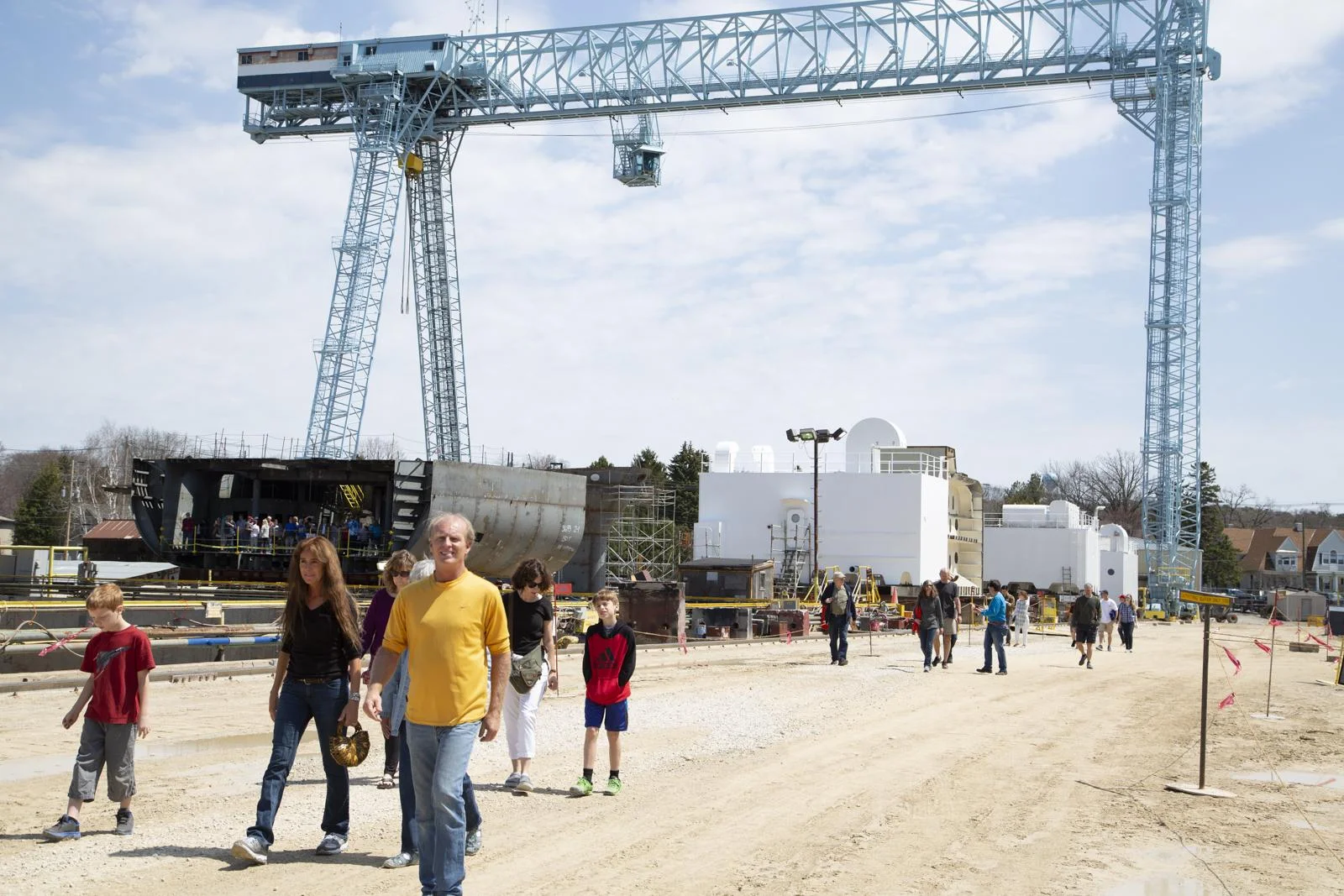Jon Gast, Special to USA TODAY NETWORK-WisconsinPublished 6:32 p.m. CT May 21, 2018
This check off my bucket list fell more into the column with sky diving, considering the resulting experiences were very similar.
Actually, I was thinking a parachute might have come in handy as I was riding the elevator up one of the legs of the gantry crane at Fincantieri Bay Shipbuilding in Sturgeon Bay last week.
Years ago, there were days when I had trouble climbing up a ladder to string a net on our driveway’s basketball hoop.
But age has seemingly relaxed such fears, perhaps knowing that we all have to go sometime. Still, the crane presented a challenge.
It just isn’t any ordinary crane. Perhaps if it were located in some larger city among taller buildings, it wouldn’t be as conspicuous as it is in Sturgeon Bay.
But “Big Blue” has become the most prominent structure in this small town’s skyline.
“Big Blue,” as it is affectionately known at the yard, is the gigantic crane that spans the expansive graving dock that services some of the largest vessels on the Great Lakes.
If you asked a lot of the city’s residents how long the crane has been around, many would have a hard time imagining the city without it. Even some of the older residents might have trouble putting an age on it.
Count me among that group. I arrived in town nearly three years before it went up and I can’t visualize the yard without it. All I know is that ever since, I’ve wondered what it was like up there and the view it must afford.
Well, the distinctive four-legged structure turns 40 years old this spring, a product of the yard’s building boom of the 1970s, especially the phase that involved the construction of six 1,000-foot bulk carriers.
Now, years later, the arrival of these boats in town for winter layover has left some of us a bit complacent as to their grandeur.
That’s perhaps why I like to serve as a tour guide for the Rotary Club’s annual Shipyard Tours. With the Paul R. Tregurtha in town for this year’s tour a couple weeks ago, visitors remind you of their significance.
Actually, they reinforce the uniqueness of living in proximity to the largest shipyard on the lakes. Everything seems big there. Especially the crane.
Production Manager Stewart Fett has spent 44 years at the yard and was more than happy to talk to me about the crane, a piece of equipment that with his electrical expertise has provided a unique platform on which to test his skills while enhancing the machine’s capabilities.
Stu said the crane’s construction by the yard’s previous owner, Manitowoc Company, was in concert with the creation of an 1,100-foot-long graving dock.
“We were building the Belle River (later renamed the Water J. McCarthy),” remembered Fett. “It was our first 1,000 footer.”
The four-legged design of the crane allows it to roll on railroad ties up and down the full length of the dock to deliver needed materials for new construction and repair work.
Fett pointed to an already assembled bow section for the petroleum barge being constructed at the end of the dock as one of its next heavy lifts.
He also pointed to the elevator and asked if I wanted to go up. I had my hard hat on and, accompanied by Stu, who by his own estimation had been to the top at least 1,000 times, what could go wrong?
Still, this wasn’t a Marriott resort elevator, and at the top the door was a little sticky. Stu said it was nothing a little WD-40 wouldn’t fix. It was also the door where he said some preferred not to get out.
I did, and Stu showed me some of the inner workings of the crane. It was noisy inside the building at the end of the crane but I’ve never had a fear of noise.
But once we stepped outside to the catwalk that spans the crane, I surprisingly felt pretty good. I wouldn’t say great, because the crane isn’t something you walk around on every day, but the view was fantastic.
Below in the graving dock, shipyard workers were busily working on two hulls. Fett said only one other similar graving dock remains on the lake, making this view all the more significant.
We walked down to the little hanging cab that houses the crane operator. With his sunflower seeds for a snack and a view unlike any other in the city, he admitted to relishing his job.
While the 40-year wait to the top of the crane was everything I could have imagined, I kind of relished the elevator ride back down.
Back on the ground, I thanked Stu for the tour of “Big Blue” and then looked back up at it. It seemed an even higher look up.


